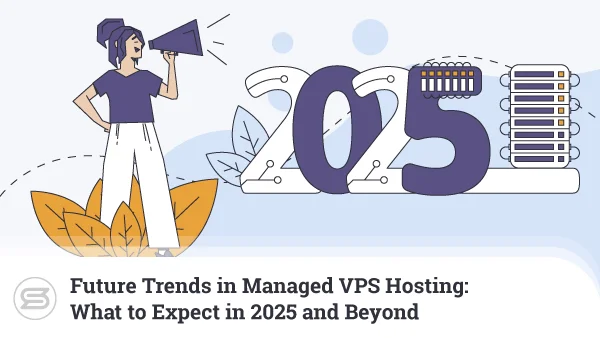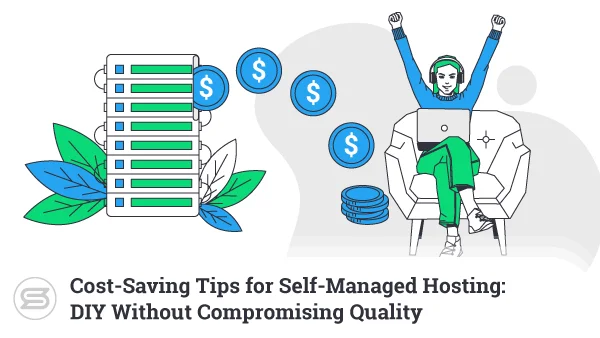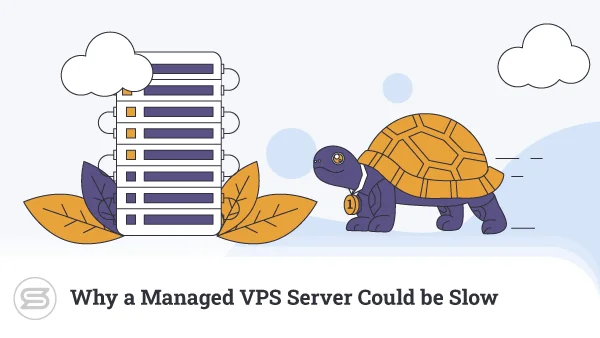As the demand for online content grows, so does the popularity of content-heavy websites. But how can you keep optimal performance when storing tons of data and facing frequent traffic spikes?
Investing in a Managed VPS (Virtual Private Server) hosting plan that offers performance, scalability, and reliability is a great way to start a content-rich website. Such packages will provide the resources to navigate all possible issues and will enable you to provide a consistent, high-quality user experience, even during traffic spikes.In this article, we’ll explore how fitting managed VPS hosting is for content-rich websites and handling traffic spikes.
Understanding Managed VPS Hosting
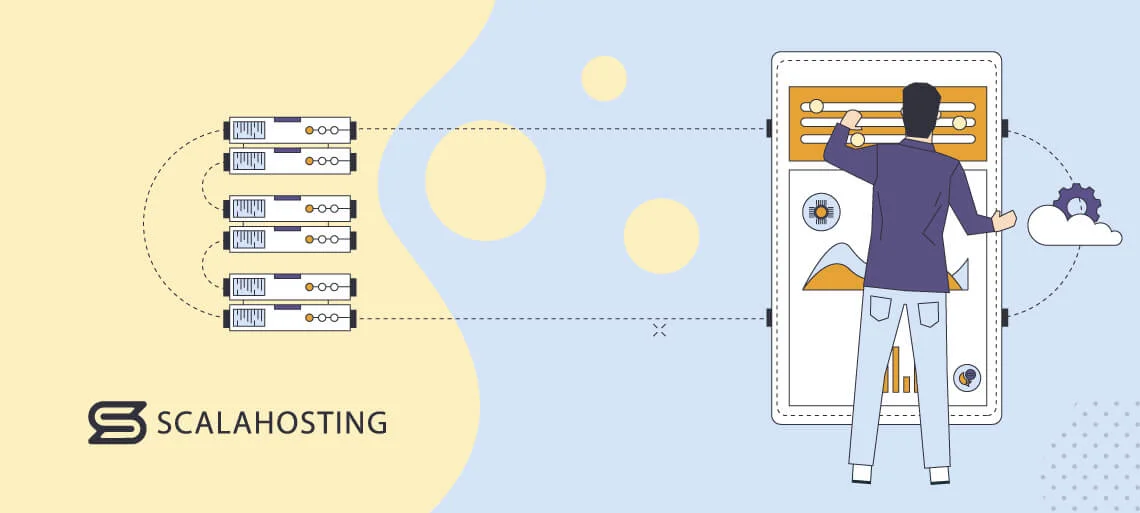
In a VPS environment, several users share one physical server. They get an isolated account with dedicated resources, such as CPU, RAM, and storage. When you opt for a managed service, you get a designated team to take care of the technicalities surrounding your server.
This setting provides serveral benefits, among which are greater control and security compared to shared hosting. The support team will configure the basics for you, such as the OS, and monitor for potential issues.
They will notify you about your resource usage as well. You can also easily scale and get more storage, RAM, etc. when your website starts growing.
Overall, managed Virtual Private Servers are the perfect environment for content-rich websites.
Challenges Faced by Content-Rich Websites And How to Handle Them
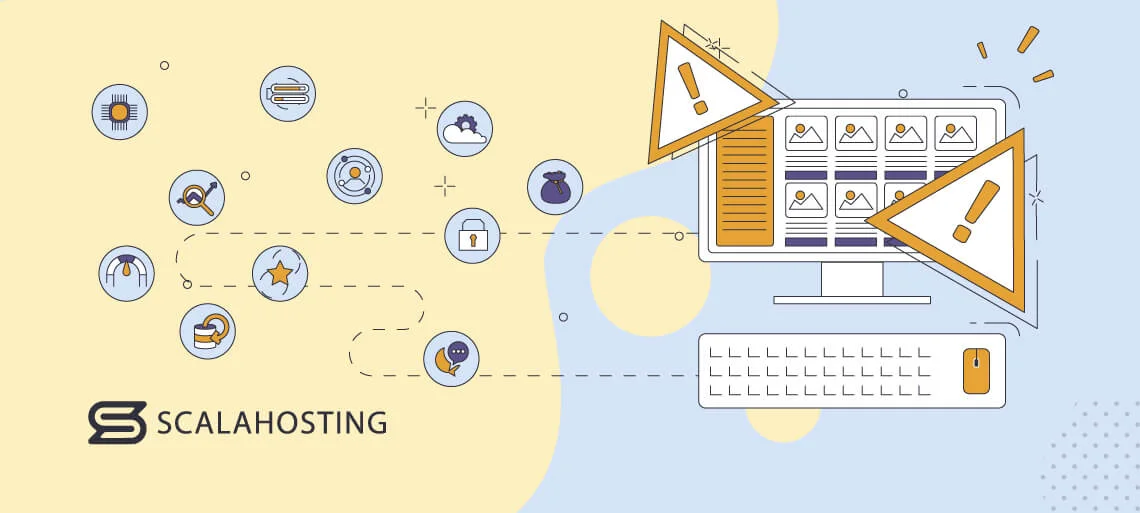
Content-rich websites encompass a variety of online platforms, including but not limited to:
- news outlets
- ecommerce stores
- multimedia sharing sites
These websites often contain large amounts of text, images, videos, and additional plugins. They often experience traffic spikes, due to various factors, including promotional campaigns, global news, and viral events.
Unfortunately, said spikes are often unpredictable and can cause slow loading times or even crashes if your server is not prepared. Those issues can lead to poor user experience, lost revenue, and damage to the website’s reputation.
There are several things you can do to avoid this.
Scaling Resources on Demand
VPS hosting offers several scaling options. If you’re the server owner and need more resources, you can simply buy the hardware and install it.
However, most people trust hosting vendors and use virtual servers. In that scenario, you can turn to the support team and discuss options. In the context of a managed service, they will reach out to you the moment they notice your resources are not enough.
Thanks to cloud technology, ers now allow their clients to tailor the server configuration to match their exact neemany VPS providds. That allows them to later add and remove resources without affecting the rest of the configuration.
In addition, some vendors offer autoscaling. They employ automated tools that keep track of server load. When the need arises, said tools automatically add additional CPU cores or memory so that your website can handle the traffic spike.
Traffic Analysis and Prediction
To prepare for traffic spikes, you can get web analytics tools to monitor traffic trends and user behavior. Popular options include Google Analytics, SolarWinds NetFlow Traffic Analyzer, and ManageEngine OpManager Plus.
Such apps generate reports that will help you analyze historical data, which makes it easier to predict potential traffic spikes and proactively allocate additional resources. You can also see how your website has handled such surges in the past. That way you can create a successful strategy to handle upcoming high-demand situations.
Load Balancing Techniques
Load balancing is the act of distributing the incoming traffic across multiple servers to ensure optimal performance and prevent server overload. This, in turn, improves website performance and reduces downtime.
There are various load balancing techniques, including:
- round-robin – an authoritative name server takes over the load balancing
- IP hash – the load balancer turns the client IP address to a number and then maps it to individual servers
- least connections – the load balancer finds the servers with the fewest active connections and distributes the traffic to them
- resource-based – load balancers analyze the server load and distribute traffic to the server with enough free resources
- least response time – the best server is determined by a combination of the server response time and the active connections
The choice of load balancing method depends on the website’s specific needs and infrastructure.
Content Delivery Networks (CDNs)
Content Distribution Networks (CDNs) can increase your website speed, enhance security, and reduce server load. They also help mitigate traffic spikes and minimize downtime.
CDNs cache and distribute your website’s content across multiple global servers. They send data from the server closest to where the request originated, thus helping with load balancing.
You can easily configure a CDN yourself. Cloudflare, one of the biggest names in the industry, provides its content delivery network for free. All you have to do is register your domain name and then change its DNS settings to point to the CDN.
Security Measures for Handling Traffic Spikes
Attackers might try to exploit or simulate traffic spikes as a way to explore vulnerabilities. That’s why you need to be prepared about the most common security issues.
Distributed Denial of Service (DDoS) attacks overwhelm your website with traffic. To avoid that you can employ a mitigation strategy. First, you will need to choose a suitable service.
To do so, check the following criteria:
- network size
- processing capacity
- scalability
- flexibility
- reliability
When you choose a cloud-based provider, there are four stages of mitigating a DDoS attack:
- detecting – the service has to distinguish between an attack and a high volume of normal traffic.
- responding – once the threat is confirmed, the DDoS protection network drops malicious bot traffic and absorbs the rest.
- routing – the service routes the traffic and breaks it into manageable chunks.
- adapting – the protection network scans for patterns, such as repeating offending IP blocks, and uses the data to prepare for future attacks.
Web Application Firewalls (WAFs) are an additional layer of security that you can employ to protect your website from threats. They filter and monitor the HTTP traffic between an app and the Web.
There are three types of WAFS:
- The hardware-based ones minimize latency but are the most expensive and require physical storage and maintenance.
- Host-based WAFs can be integrated into software. They are cheaper and customizable but use server resources.
- Last but not least – cloud WAFs, the cheapest option. Their biggest drawback is they’re managed by a third party and you don’t have much control.
Of course, you must also implement the best-known security practices, like regular updates and two-factor authentication. This will further fortify your site against potential attacks.
Optimizing Content for Performance
Content optimization techniques, such as caching, image optimization, and minifying the code, can significantly improve website speed and user experience.
Cache data is typically housed in swift access hardware such as RAM and can also be utilized alongside a software component. The main goal is to boost data retrieval performance by lessening the requirement to access the slower storage layer below it.
Image optimization will improve your page loading speed. There are several ways to achieve this:
- choose a suitable file format – JPEG or JPG are best for images with lots of colors, while PNG is recommended for simpler images.
- compress, but never go overbroad – compression will benefit the loading times, but you will lose the quality if you choose a high rate.
- resize images – the good news is that some website builders, like WordPress, automatically create several versions of each image in different sizes and all you have to do is choose the right one.
IMPORTANT: Clean your media library often. You don’t need 4 versions of the same image. Keeping the unnecessary ones wastes previous server resources.
Minification refers to the process of compressing the website code. It’s a great strategy to decrease load times and conserve bandwidth.
But what should you remove?
Developers commonly include spacing, comments, and well-named variables when working on HTML, CSS, and JavaScript files. The goal is to ensure code and markup readability for themselves and potential collaborators.
Once the development stage is over, however, these become unnecessary. Removing them will improve the overall user experience.
Disaster Recovery and Backup Strategies
Content-rich websites store tons of data. In order to make sure you don’t lose it – you need to prepare for unexpected events such as hardware failures, data breaches, file corruption, etc. That’s why you need efficient disaster recovery and backup strategies.
Here’s what we recommend:
- automate and schedule your backups – set start and completion times, but make sure they’re not during your active hours.
- test and verify your backups – you need to make sure you’re not relying on corrupted copies.
- choose a provider that offers offsite and remote backups – the support team will back up your data daily on a remote server, with you having access to the information.
- create a disaster recovery plan – set recovery time Objectives (RTO), recovery point objectives (RPO) and make notes of the crucial systems and data that need to be prioritized.
- test your data recovery plan – you need to see if it meets your requirements
- invest in a high-availability solution – those will make sure your service is continuously available, thanks to failover mechanisms and redundant infrastructure setups.
Future-Proofing Your Website
One thing you always need to keep in mind is the long-term growth potential of your website. You should be monitoring and analyzing user behavior continuously, anticipating traffic spikes. That way you’ll know when it is time to scale.
Choosing VPS hosting will allow you to do just that when the time comes. It enables you to add resources as your traffic and content demands expand.
A good idea is to follow emerging trends in virtual private server hosting. Technologies like containerization (Docker), and serverless computing (AWS Lambda) offer innovative ways to deploy and manage applications. This enables more efficient resource allocation and will help you save some money in the long run.
User Experience and Site Speed
User experience is closely linked to site speed. In fact, 53% of viewers will leave your website if it takes more than 3 seconds to load.
Managed VPS enables you to control your resources and guarantees your site runs at optimal speeds at all times. You also get a dedicated IP address, protecting you from other users ruining the reputation of your server IP and even blacklisting it.
Another thing that influences site speed is the content itself. Techniques like data caching and content distribution networks (CDNs) are a great helper in that aspect.
Support and Customer Service
The support team is the backbone of any good hosting provider and is crucial for any type of website, not only high-traffic ones. After all, even in a perfect world, technical issues are bound to arise. They range from minor hiccups, such as email problems or minor website glitches, to major ones, like server crashes.
As you can imagine, having a responsive and knowledgeable support team is crucial. Fast resolution of impending issues can save your business from downtimes and potential loss of revenue.
One of the biggest benefits of Managed VPS is the fact that you get a dedicated support team to take care of your server. You get your account fully set up for the best possible performance and won’t need to deal with any configurations or technical issues – the experts have it covered. They are also available around the clock to answer your hosting inquiries.
Budget-Friendly Strategies
The first step is to establish a realistic hosting budget for your website. Compare vendors carefully and choose the one with the most flexible plans. Depending on your budget, you can opt for a longer subscription, for example, a year.
Set aside dedicated sums for:
- renewals
- eventual price increases
- additional resources
The latter is vital with content-heavy websites, as is tracking your usage in order to avoid unexpected fees. Optimizing your website performance by reducing image size, using caching, and minifying your code will help with that. And, of course, resource scalability is always welcome for dynamic, content-rich projects.
Managed VPS with ScalaHosting
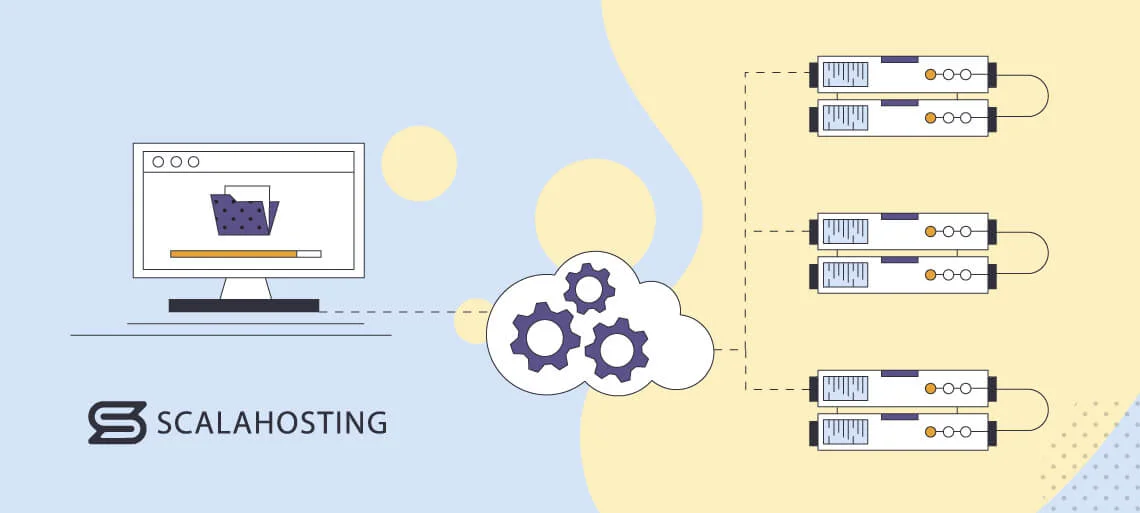
ScalaHosting is a provider with 15 years of experience in the hosting world. Our Managed VPS plans are created to handle content-rich websites perfectly. We offer scalable and customizable packages that you can tailor to fit your individual needs.
Our in-house developed web hosting control panel SPanel will reveal vital web statistics, which you can filter by period. You’ll be able to check the unique visitors per day, visitor hostnames and IPs, geo locations, and more. That way, you can monitor traffic trends and user behavior, which will help you predict eventual spikes.
And because we know that hackers use traffic spikes to exploit weaknesses, we have developed our own AI-powered security tool – SShield. It blocks 99.998% of web attacks online before they even reach your server.
We are also aware that loading speeds are vital. That’s why we offer our clients the option to use CDNs. We have ensured full compatibility with all CDN platforms – Cloudflare, StackPath, KeyCDN, Sucuri, Akamai, etc. They can be easily integrated within the Scala environment.
In addition, we utilize the latest virtualization technologies in order to make our servers fast and dependable. With the help of OpenLiteSpeed, your content-heavy website will be lightning fast.
If you have any questions or are facing any issues – our support team is available 24/7 via chat and email.

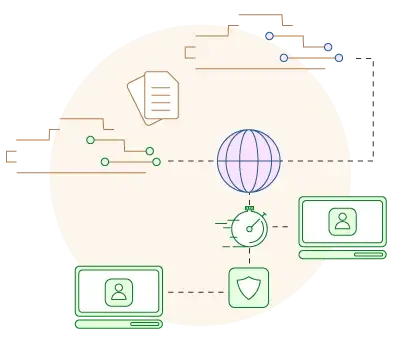
Wrap Up
Maintaining optimal website performance and reliability, especially when dealing with tons of content, can be a challenge. Thankfully, Managed VPS hosting plans offer exactly what your website needs – a balance of performance, scalability, and reliability. Such a package will enable you to secure your online presence, keeping your website accessible at all times.
FAQ
Q: Does VPS have a unique IP?
A: In a VPS environment, several users share the same server. However, their accounts are completely isolated and each gets its own unique IP address. If any user gets blacklisted for spam, for example, it won’t affect the rest of the accounts.
Q: Is cloud cheaper than VPS?
A: You’ll need to pay a set monthly fee for VPS plans. For cloud hosting, the monthly subscription price can change, depending on the visitors you’re getting. During traffic spikes, you’ll need to pay more. However, if you’re getting fewer views – the price will be lower. Whether cloud is cheaper than VPS really depends on the expected traffic.
Q: How many websites can you host on a VPS server?
A: There is no limitation in terms of the number of websites that you can host on a VPS server. The resources included in your subscription – disk space, RAM, and CPU – are fixed and you can fit as many online projects as you wish within those limits. Should you need more – you can always add more SSD space and other resources.

